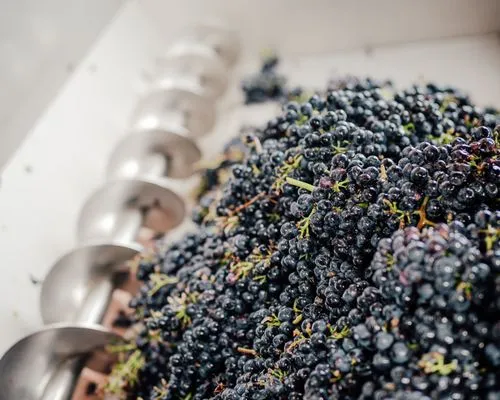Switzerland is 41,285 km² in size. This puts it at the bottom of the world rankings in terms of land area - in 132nd place.
When it comes to vineyard area, however, Switzerland makes up some ground: with 146 km² of vines, it is in 20th place worldwide.
In relation to the country's surface area, Switzerland therefore has a fairly high proportion of vineyards. The country ranks 10th in the world for this indicator.
Switzerland almost makes it onto the podium in terms of annual wine consumption per inhabitant: at around 35 liters per capita (2022), it is in 4th place worldwide. Only Portugal, France and Italy drink more wine.
Vineyard
[]

Six regions, six identities
The 26 cantons and 62 wine AOCs have been grouped into six wine regions. Each of the six regions has a specific identity defined by its landscape, its geology and its specific climate.
At the heart of the Alps, Valais is home to almost one-third of Swiss vineyards.
The canton of Vaud extends from Lake Geneva to Lake Neuchatel, where there are six AOCs and two AOC Grand Crus.
German-speaking Switzerland is made up of sixteen cantons where Pinot Noir and Müller-Thurgau largely dominate.
The canton of Geneva is where the Jura and the Alps meet; it is the 3rd wine production area in Switzerland, between town and countryside.
Ticino is on the southern side of the Alps facing Italy; more than 80% of the vineyard surface area is Merlot.
The Three Lakes are divided into three distinct entities: Neuchatel, Lake Biel and Vully.
Key figures
Swiss wine production is spread across the six wine regions
0%
Valais
0%
Vaud
0%
German-speaking Switzerland
0%
Geneva
0%
Ticino
0%
Three Lakes
Native and typical grape varieties
In Switzerland, there are nearly 252 cultivated grape varieties. However only 90 are listed by the Federal Statistical Office (FSO).
The four most cultivated grape varieties are Pinot Noir, Chasselas, Gamay and Merlot; they represent 66% of vines grown.
The native grapes that make up the wealth, and contribute to the identity, of Swiss wines represent 36% of the total. They include Chasselas, 24%, as well as Gamaret, Garanoir, Arvine, Amigne and many others which represent 9% of these grapes.
Traditional and "international" grape varieties such as Chardonnay, Sauvignon and Syrah allow Swiss producers to demonstrate the quality of the terroir and their know-how in international comparisons.
Map of the Swiss wine regions
Today, Switzerland has 14,696 hectares worked by more than 2,500 wine producers who make 100 million litres of wine per year.
About Switzerland
Switzerland, an alpine terroir
This mountain range created by the meeting between the African plate and the European plate plays an essential role for several Swiss wine regions. The backbone of Europe, the Alps cover 61% of Swiss territory. The Alps overlook the vineyards of Valais, Chablais vaudois, part of Ticino and Graubünden. In addition to the slope, which wine producers have learned to tame by creating terraces, the climate, winds and varied sun exposures are essential elements in the development of mountain vineyards.
The term alpine vineyard covers quite different types of soil. Very shallow vine parcels where only a few tens of centimetres of soil separate the surface from the bedrock can lie side by side with deep loess soils - sand brought by the wind - several metres thick. In addition, there are screes and alluvial cones, domes formed by the sediments carried by a torrent, like that of Chamoson. With this varied landscape, Swiss producers cultivate a great range of grape varieties, thereby contributing to the diversity in vineyards that is so characteristic of Switzerland.
Influence of the lakes
All the great lakes of Switzerland host vineyards on their shores, which benefit from the regulating presence of these large bodies of water. Reflecting the sun in summer and offering protection against frost in winter, they also provide a magnificent setting for Swiss vineyards.
In the canton of Vaud, Lake Geneva is bordered by the wine-growing sub-regions of La Côte (between Geneva and Lausanne), Lavaux (from Lausanne to Montreux) and Chablais (from Montreux to Valais) and in France by Savoie. The Three Lakes region edges, as its name suggests, three lakes: Lake Neuchatel, Lake Biel and Lake Morat. In German-speaking Switzerland, on the shores of Lake Zurich, vines are found on steep but well-ventilated banks. The vineyards of Thurgau and St. Gallen benefit from the influence of Lake Constance. Ticino vineyards have a Mediterranean climate thanks to Lake Maggiore and Lake Lugano.
Vineyards that are not planted directly on the edge of a lake generally follow the course of a river, such as the Rhone in Valais, the Aare, the Limmat and the Rhine.
To visit our site, you must be of legal drinking age in your country of residence.










